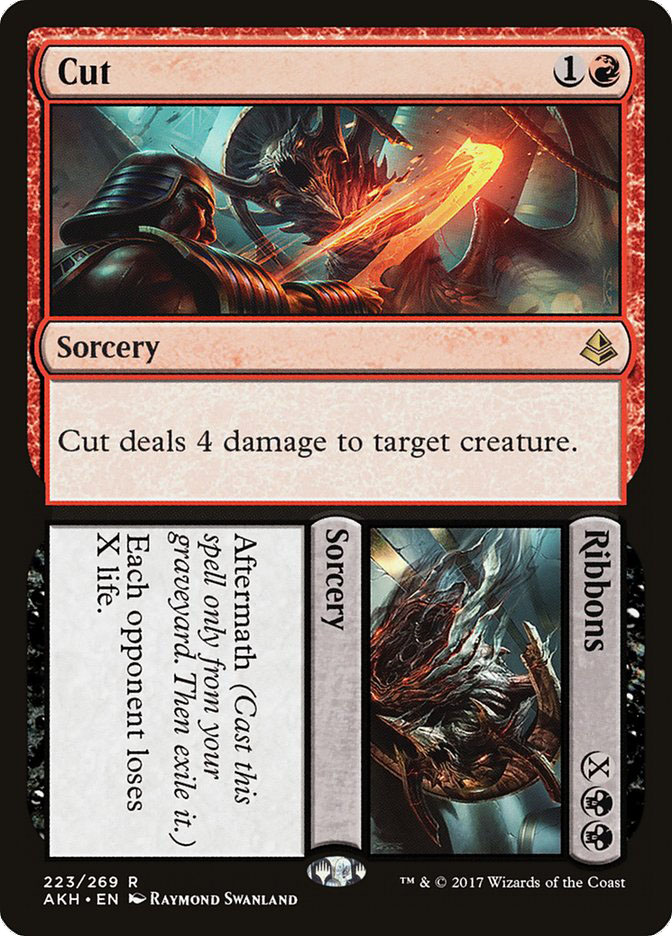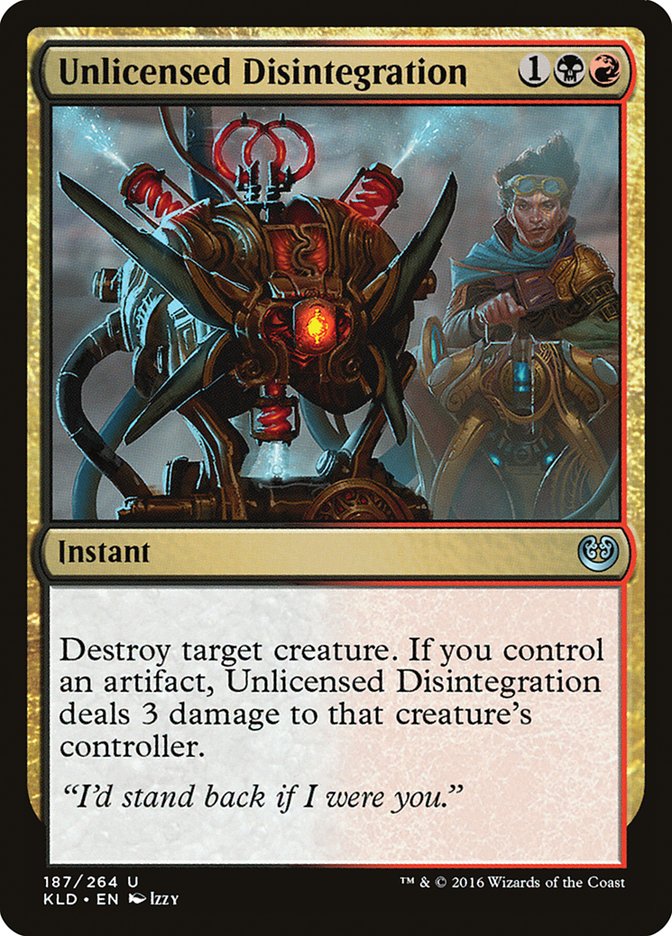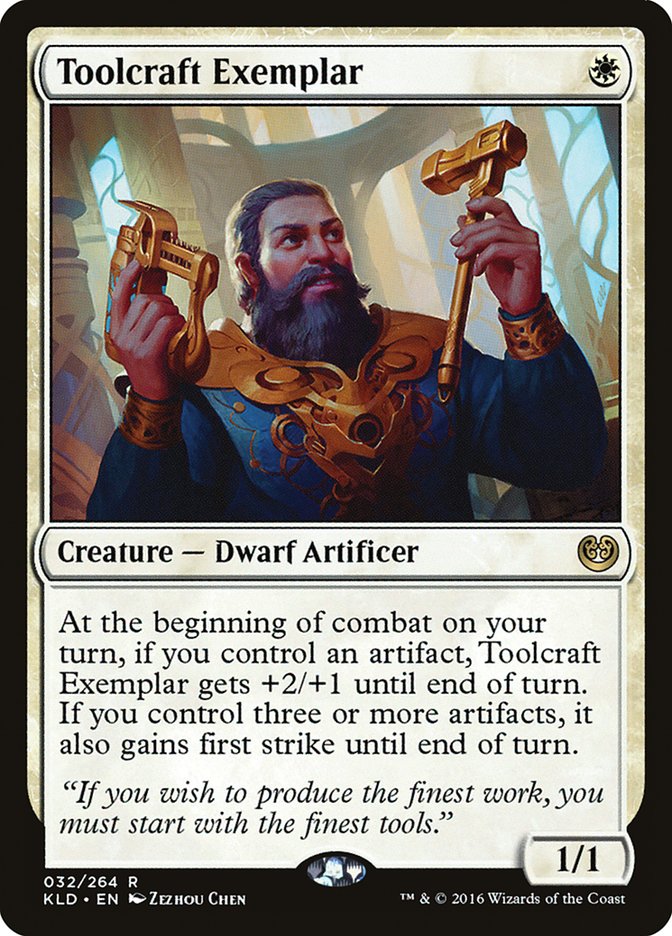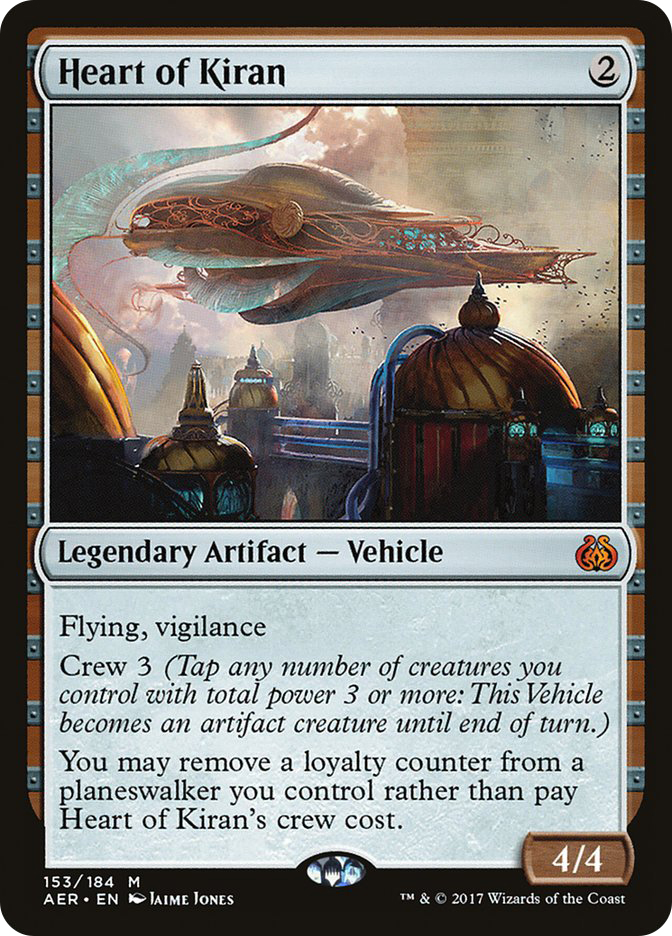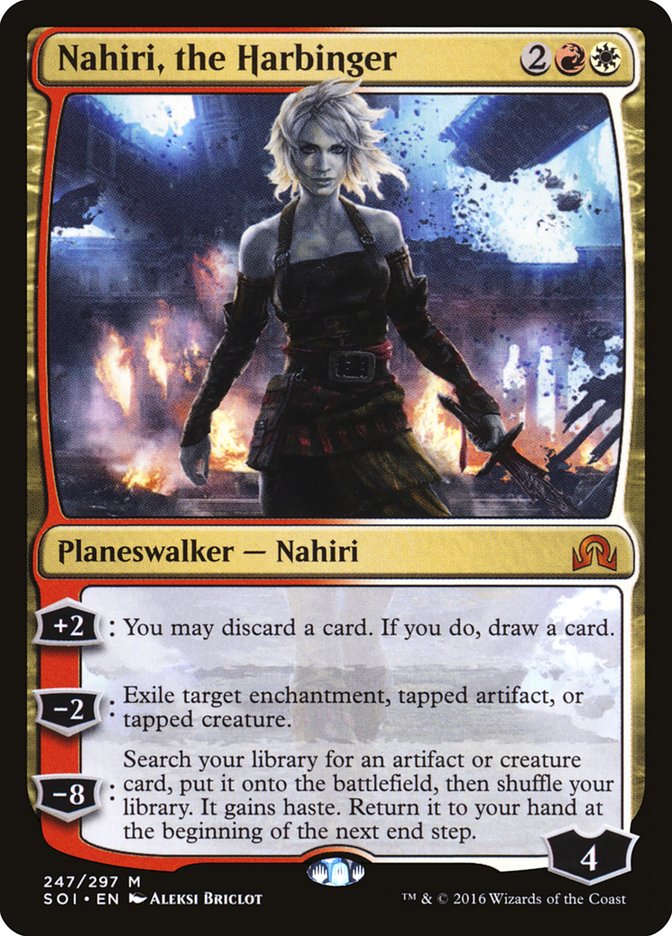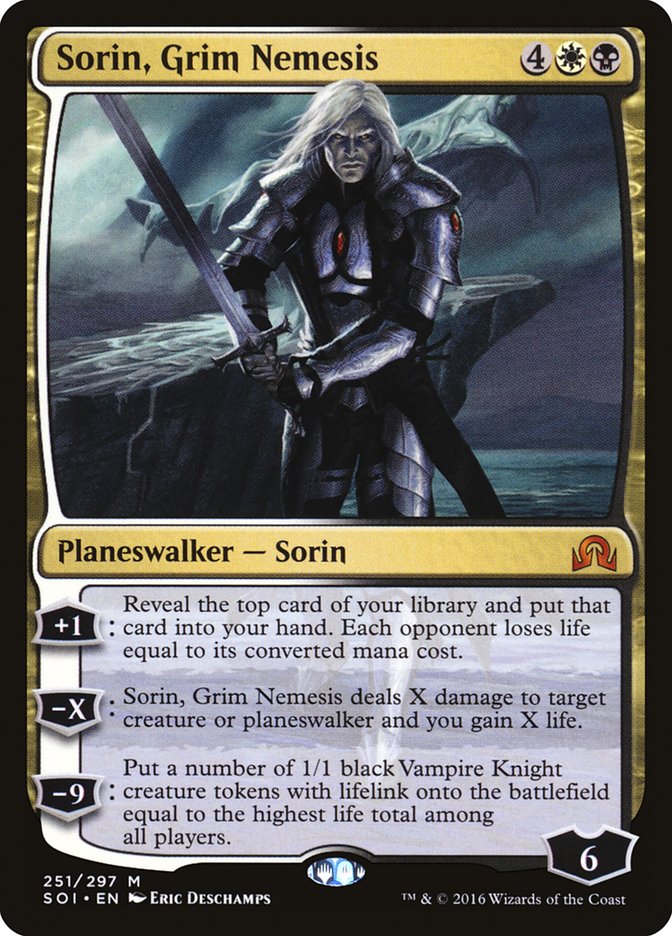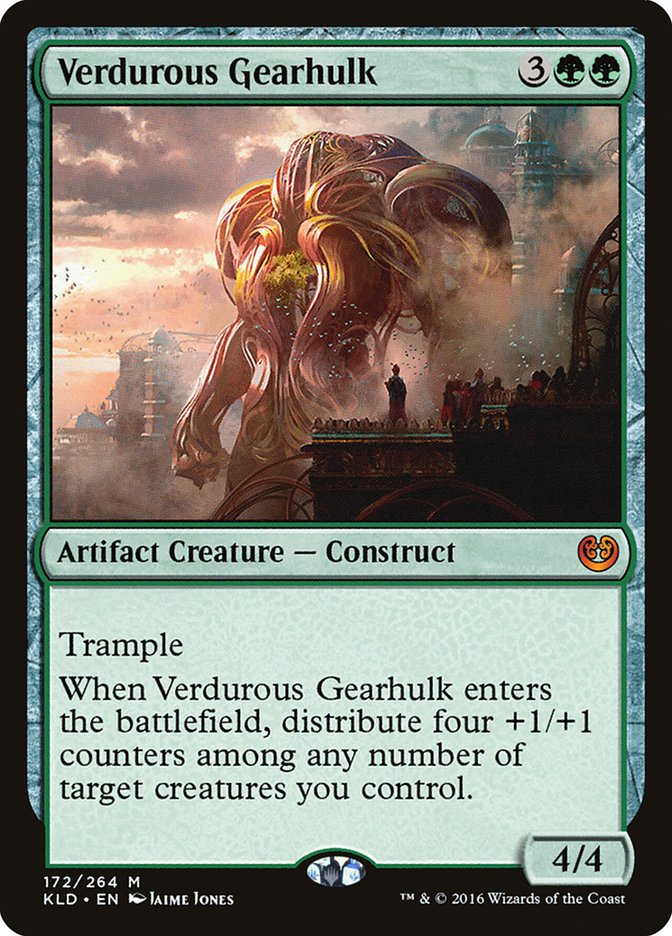Last week was an interesting one, to say the least. For the first time ever, a set released on Magic Online before its paper counterpart. This allowed players to prepare for #SCGATL in a much more convenient way, but with every good story comes a twist.
Wizards decided to use that early information to emergency ban Felidar Guardian, a card they neglected to interact with earlier in the week during scheduled ban and restriction announcements. This news threw a wrench into everyone’s preparations for the weekend, as it cut their practice time in half. This left most to rely on theorycrafting as opposed to the normal “grind” that comes with preparing for events on the SCG Tour. With little time to prepare, the usual new brews took a significant beating to the previously established “best deck” in the first weekend of tournaments. Mardu Vehicles was, and still is, the boogeyman of Standard.
Now, this doesn’t really strike those in the know as “news,” but rather looks to be a half-hearted attempt at an opening paragraph. In actuality, though, it’s pertinent to the overarching story line of Standard. This unique fluctuation of information that players endured last week needs to be a part of the equation when we begin dissecting the events of this past weekend. We can’t just simply ignore these facts, or we may easily begin working with incomplete information for tournaments down the road.
The main reason to bring all of this up is that Mardu looked pretty (Martin) Dang good this weekend. So good that many players took to social media expressing their opinion that Mardu might also be too good to exist. Whether or not that’s true isn’t worth discussing. Well, it’s not true, but I don’t want that argument to overshadow the rest of today’s discussion.
Mardu Vehicles is an unbelievably powerful deck, but that doesn’t mean it’s invincible. The deck has holes, and they can be exploited. That didn’t happen this past weekend, however, thanks to a slew of reasons, including the fact that players didn’t have enough time to properly prepare for the event.
Mardu Vehicles had a lot going for it this past weekend. It was already an established deck making it easy to tune before #SCGATL. Almost every other new and old archetype needed significant work to function properly. That meant the non-Mardu decks needed more attention in the maindeck, leaving sideboards to potentially become afterthoughts. It’s easy to spot if you’ve researched decks for as long as I have, but this time around, you don’t have to be a Standard specialist to pinpoint who put thought into their sideboards and who didn’t. You can see it as clear as day. Especially when you see people with reactive sideboards against Mardu Vehicles.
Mardu Vehicles has the innate ability to put The Fear into opponents. The deck has so many aggressive elements backed up by Murder-Bolt and now Mizzium Mortar-Ball that makes it difficult to not respect the decks aggressive side. Luckily, it’s pretty easy to sideboard dedicated cards to put a halt to these aggressive starts. Realistically, though, Mardu’s already established that they don’t play just one way. The deck has the ability to transform from an aggressive deck into a more Planeswalker Midrange strategy in matchups where the aggressive cards just won’t cut it. Everyone should have known this going into the weekend, but it seemed like many players forgot about it while watching #SCGATL play out.
Creatures (18)
- 2 Archangel Avacyn
- 4 Thraben Inspector
- 2 Thalia, Heretic Cathar
- 4 Scrapheap Scrounger
- 4 Toolcraft Exemplar
- 2 Walking Ballista
Planeswalkers (4)
Lands (25)
Spells (13)

Andrew Jessup himself attributed the win mainly to luck and sideboarding. Andrew’s clearly being humble here, as he was one of the strongest players in the field, but at the same time there’s still probably some truth to his statement. I’m under the impression that Andrew sideboarded well, but it only looked to be exceptional when compared to his adversaries. It did not seem like many non-Mardu Vehicles players came prepared for the matchup, and it showed. Mardu Vehicles will continue to be the best deck in the format if players can’t get a grasp on the deck’s ability to pivot strategies between games. Now, it’s not like this is an easy thing to do, but it’s something necessary to figure out before it’s too late.
Playing against decks with transitional capabilities isn’t easy. In fact, it’s arguably one of the most challenging aspects of Constructed Magic when you encompass everything that has to go into strategizing against it. First you need to identify the counter-strategy your deck can apply to best dispatch their sideboard plan. This can be difficult, since there are often unintuitive decisions that go into finding the exact effect you’re trying to create.
Next, you need to execute the strategy effectively. It may be easy to identify the strategy’s potency in testing, but a real tournament setting has more variables that come into the mix, the most crucial being that you don’t actually know the contents of your opponent’s deck. You haven’t the slightest if they actually transitioned away from their Game 1 strategy or just “ran it back.” Now, if your new plan beats both sides of the coin, great, but odds are the “counter” you have chosen has difficulty with their original configuration.
The first place to start when working on strategizing against decks with transitional capabilities is to put yourself in their shoes. How are they going to approach sideboarding with the information they gained after Game 1? What about after they see your unique gameplans for a Game 3? Understanding the questions is the foundation you need to lay before even getting to work. For example, U/R Control doesn’t have to worry about Mardu Vehicles transitioning away from their aggressive strategy, since that’s the only one that will be effective. B/G Constrictor on the other hand has to be wary about the guessing games of sideboarding in this matchup.
You also have to accept the golden rule of combating transitional sideboards, which is to never hedge. Doing this equates to making sacrifices so that you aren’t that caught off-guard when they don’t do what’s expected, but what usually ends up happening is your post-sideboard configuration is slightly weak to both of their individual strategies. You’ve decided to lower your potency by preparing for too many things, which lowers your overall power level. In this day and age, that’s just asking to lose.
This is a very commonly practiced strategy, though. Players will sense their Mardu Vehicles opponents transitioning away from the deck’s normally aggressive tendencies, yet still want to feel safe against Toolcraft Exemplar / Heart of Kiran starts. To do this, players will often keep in some of their early-game removal for these cards.
Therein lies the problem.
You see, by preparing for both strategies, now both decks have a high density of reactive spells, but Mardu Vehicles is on the beneficiary side of this transaction. They have removal dedicated for the long-game, while those who respect the early pressure have removal that will lose value as the game goes on. This removal may have a few targets like Thraben Inspector and Scrapheap Scrounger, but we all know those aren’t what the removal was intended for.
You have to sideboard with confidence. You might end up wrong here or there, but hedging is almost always wrong. You need to take away the “control” they have over sideboarding by confidently putting them on a strategy and executing a counter-attack. A strong conviction towards execution will increase your win percentage over time as a stronger sideboard designer and in-game theorist.
Knowing how you should tactically approach these matchups is simply half the battle. The true challenge is finding what you should be doing to accomplish these goals. Now, every situation is different, but given the circumstances surrounding the here and now, we will just simply focus on Mardu Vehicles. Maybe someday down the road we can go deeper into the theory behind on-the-fly decision-making against unknown decks with transitional sideboards.
This next part might sound elementary for some of you, but it’s important to spell everything out when strategizing in these situations so that no information is missed.
Mardu Vehicles in an aggressive deck by nature. It has access to powerful early-game threats that are as diverse as they are resilient. Heart of Kiran and Gideon, Ally of Zendikar are the deck’s main source of not only damage but tempo. Opponents will have to either bend over backwards to get these off the table or off-sequence their own spells to be better-equipped to deal with them.
Not only that, but the deck has many sources of reach in the form of Scrapheap Scrounger, Unlicensed Disintegration, and Cut//Ribbons. Attacking the deck can even be difficult, thanks to how well Unlicensed Disintegration plus Clue Token can disguise Archangel Avacyn in the mid-game. Even when they don’t have this backbreaking Angel, they can represent it without wasting the mana at the end of turn.
In all honesty, the deck is a work of art. It’s high-octane aggression with more resiliency and diversity than should be allowed in Standard. That doesn’t mean the deck doesn’t have issues. Its mana isn’t something to write home about, nor is the deck’s ability to combat its own mana “screw” or “flood.” It’s also not well-equipped to play from the back foot. This is the main reason why the deck struggles against most Winding Constrictor strategies, and also why it has so many controlling aspects in the sideboard.
Even though the deck needs to transition away from an aggressive deck doesn’t mean it still won’t be leaning on the same spells. Heart of Kiran and Gideon, Ally of Zendikar often stay as the deck’s main source of victory, but those spells become complemented by other planeswalkers like Nahiri, the Harbinger; Chandra, Torch of Defiance; and even sometimes Sorin, Grim Nemesis. It often replaces its early pressure (even Heart of Kiran when necessary) with more removal to be better able to deal with early pressure from certain decks.
When you think of the deck in these terms, you can begin to understand why it’s so important to only respect one of the deck’s strategies at a time, but we already covered that. I should no longer need to stress that importance.
What’s important to take away from this basic explanation of Mardu Vehicles is that they want the post-sideboard games to play out more slowly when they transition. Not only are they bringing in cards to make this happen in the form of removal, but so many people at #SCGATL last weekend did the same thing.
Many players sideboarded in removal for both artifacts and planeswalkers, believing that’s the way to approach the matchup, when it couldn’t be further from the truth. By increasing their deck’s density of removal, they were unknowingly implying that they were favored as the game went on, when in reality they were actually playing into Mardu’s plans the entire time. In actuality the best course of action for many of these players was to diversify their own threats with aggressive elements that could combat the Mardu deck’s ability to play a control role.
Now, sideboarding threats isn’t anything new, but it is a rarely executed strategy, given that most formats don’t have such a prominent deck with transitional capabilities. We haven’t seen a format in some time that needs sideboards with such a high density of proactive elements, but that day is upon us. The best way to attack Mardu Vehicles is to find new threats that they have a difficult time answering. They don’t even have to be “sticky threats,” just those that leave a little value behind before being dispatched by a removal spell. They also have to play well against planeswalkers.
Look, I’m not saying the journey to find these threats and then implement them into a strategy is going to be easy. If it were, we would already see Mardu Vehicles getting punished for its widely known “gimmick.” Truth be told, I’m in the same boat as everyone else looking for these miracle threats. I didn’t write this article today with the answers in mind, but simply just to unveil the format’s deepest concern. It’s up to you to research, theorize, and come to conclusions on your own.
Maybe I or someone else will figure it out come #PTAKH, but if not, we may see the deck run over another Pro Tour. I’ll be honest: I’ve even started playing the deck just in case all else fails. Dark days indeed!
Who am I trying to kid? We all know Verdurous Gearhulk is going to be in my deck!
“Death to Vehicles!”


